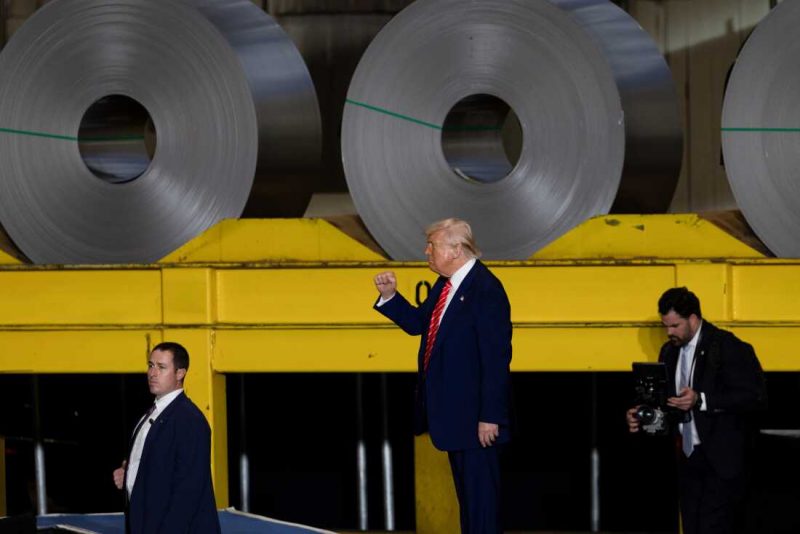
White House Increases Tariffs on Steel and Aluminum Imports
In a move with significant implications for the U.S. metal market, the White House announced a 50% tariff on imported steel and aluminum. This tariff increase, effective June 4, follows President Donald Trump’s remarks during a speech in Pittsburgh. He signaled the change during the speech. The goal of the tariff hike is to counteract the rising threat posed by foreign metal imports and to support domestic industries. Additionally, the new tariff rate doubles the previous 25% on steel and aluminum products.
Tariff Impact and Key Exemptions
While the 50% tariff rate applies to most countries, the United Kingdom (U.K.) is notably exempt. Steel and aluminum imports from the U.K. will continue to be taxed at the 25% rate under the new trade agreement finalized in May 2025. This exception is crucial as it underscores the U.S.’s desire to foster stronger trade ties with the U.K. amidst ongoing geopolitical uncertainties.
In the steel industry, U.S. producers have largely welcomed the tariff hike. Kevin Dempsey, president of the American Iron and Steel Institute (AISI), stated that the increase is necessary to combat global overcapacity, particularly from China. However, the aluminum sector has expressed mixed reactions. The Aluminum Association supports the tariffs in principle. Yet, they raised concerns about the inability of the U.S. aluminum industry to meet demand for domestic production immediately. Despite this, the industry sees the tariff hike as a step toward strengthening U.S. manufacturing.
Industry Reactions and Economic Implications
Steel manufacturers have been supportive of the tariff increase, highlighting the pressure from Chinese overproduction and the need for protective measures. However, the Aluminum Association has emphasized that while the tariffs may help long-term, they cannot rapidly revive the domestic aluminum supply chain. Charles Johnson, the association’s president, pointed out that a broader approach encompassing energy, recycling, and trade policies is required. This approach is necessary to meet U.S. demand for aluminum.
The increased tariffs are expected to have mixed consequences for industries relying heavily on steel and aluminum imports. For example, canned food producers and brewers rely on aluminum for packaging. They have voiced concerns. Robert Budway, president of the Can Manufacturers Institute (CMI), warned that doubling steel tariffs would increase the cost of canned goods for U.S. consumers. Additionally, Marc Sorini from the Brewers Association noted that higher aluminum prices could hurt U.S. brewers. Many of these brewers rely on aluminum cans for packaging.
SuperMetalPrice Commentary:
The White House’s decision to raise steel and aluminum tariffs to 50% signals a continued push for “America First” policies. Steel producers are largely in favor, but the aluminum industry faces more nuanced challenges. Domestic production struggles to meet demand. Moreover, the tariff increase, though beneficial in the long term, may not yield immediate results. For now, U.S. manufacturers will likely face a period of adjustment. These higher tariffs will impact both producers and consumers. The move also underscores geopolitical tensions that continue to shape global trade and industry dynamics.











Leave a Reply
You must be logged in to post a comment.